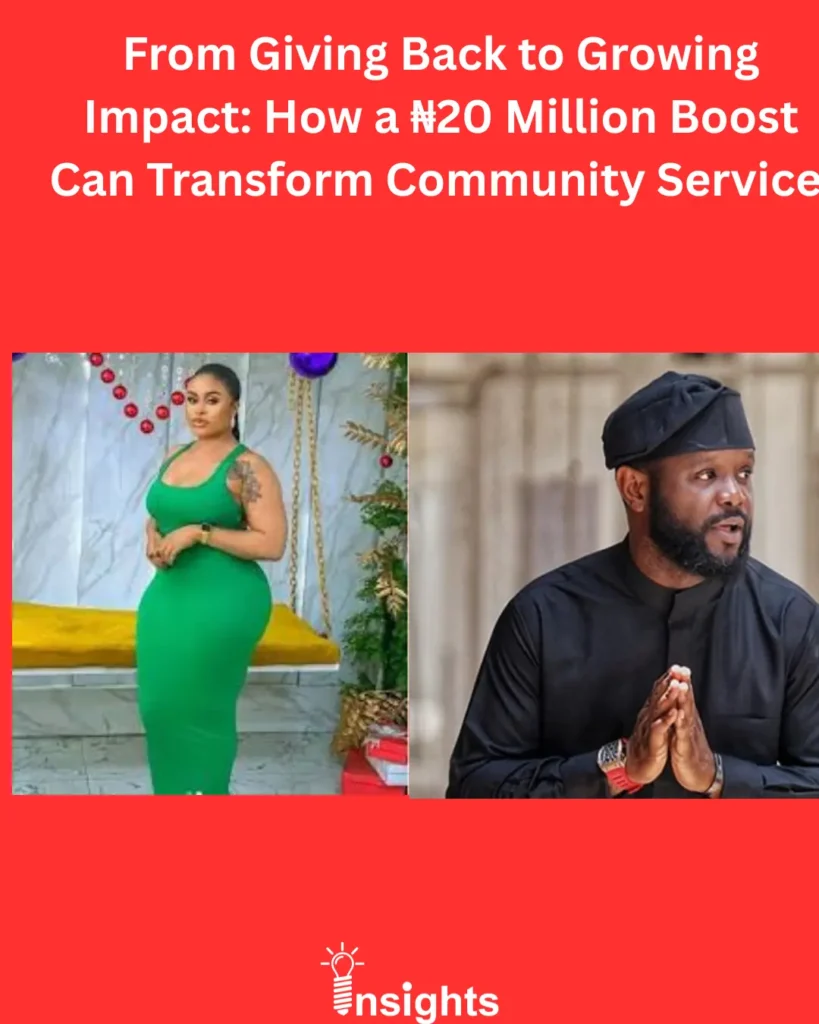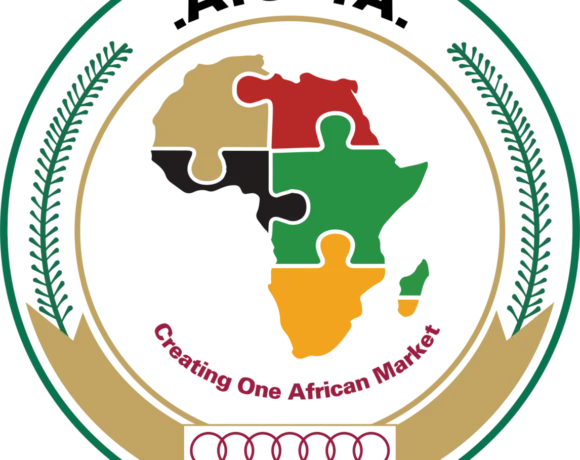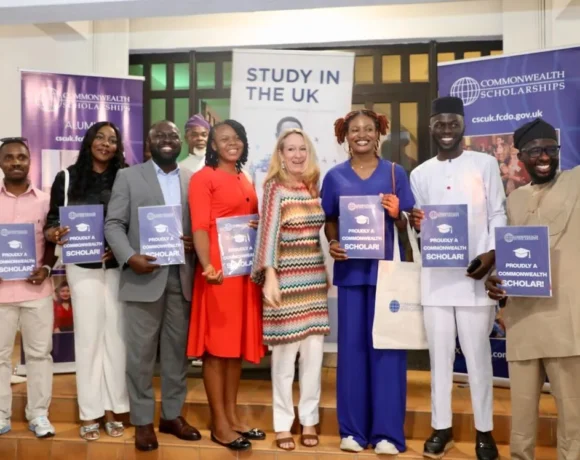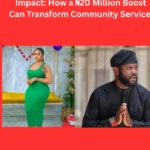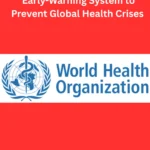From Giving Back to Growing Impact: How a ₦20 Million Boost Can Transform Community Service
Actress Sarah Martins and the Philantrophist Seyi Tinubu
Recently, actress and philanthropist Sarah Martins made headlines not only for her grassroots charity work, but also for a turning-point moment in her journey. After behaving boldly by cooking and feeding homeless people on a Lagos street median, she alleged she was harassed by enforcement officials.
Shortly afterwards, she announced that Seyi Tinubu, a philanthropic youth leader, had donated ₦20 million to her non-governmental organisation, the Golden Heart Foundation, to help establish a proper cooking facility and expand her outreach.
“From DISGRACE to GRACE… our philanthropic youth leader Mr Seyi Tinubu just supported my NGO with 20,000,000. He didn’t only give me 20,000,000 but also promised to take my FREE FOOD CHARITY OUTREACH to the next level.” — Sarah Martins
Turning Funds into Impact: Key Lessons
1. Identify a clear gap to fill. Sarah Martins wasn’t starting from scratch—her foundation already had a mission to provide free meals to vulnerable people. When her outdoor cooking was interrupted, the gap became obvious: she needed a compliant indoor cooking facility to continue safely and legally. The donation targeted exactly that.
2. Match the fund size to the need, not the other way around. ₦20 million is not astronomical in philanthropic terms—but the foundation’s requirement was exactly that amount: to secure space, equipment, and streamline operations. Sometimes, a “just‐right” donation is more effective than a massive, unfocused one.
3. Align with regulation and long-term operations. The donation was not just to give free food spontaneously on a road median (which raised regulatory issues) but to set up a compliant facility that can scale and sustain. In Sarah’s words, the support is about “taking the outreach to the next level.”
4. Use the moment for visibility & accountability. The narrative moved from “act of charity” to “structural change”. That helps build credibility for the foundation, attracts partners, and gives donors confidence. Sarah’s public gratitude and commitment help set a tone of transparency.
5. Donor clarity matters. There is a caveat: Seyi Tinubu later clarified that he did not personally donate the ₦20 million, but that some friends motivated by compassion had raised it. He emphasised that support should not infringe legal constraints. This underlines that even with good outcomes, clarity of donor role and legal compliance are vital.
How You Can Apply This in Your Community or Organisation
- Start with a defined mission – What one change are you trying to make? Feeding children? Supporting schooling? Health outreach?
- Assess the infrastructure gap – Do you have the right space, equipment, training, legal compliance?
- Estimate a realistic budget – What around ₦10-₦50 million could achieve for your context?
- Identify potential donors or fundraising partners – Individuals, foundations, diaspora groups, corporates.
- Plan for sustainability – Once the facility is built, how do you keep it running? Volunteers? Partnerships? Social enterprise?
- Report and publicise – Share stories, photos, financial transparency, impact metrics. Build trust and attract more support.
Challenges & Things to Watch Out For
- Regulatory compliance: As seen in this case, operating on a public road median without authorisation triggered enforcement action. Make sure you have permits, safe site, health & safety standards.
- Misattribution of support: Clarify who is giving and in what capacity; this avoids confusion and maintains integrity.
- Impact vs visibility tension: While a big gift draws attention, ensure the money is spent on mission-driven work—not just on optics.
- Sustainability: One-time gifts are helpful, but you’ll need a strategy for ongoing operations, maintenance, staffing, supplies.
The story of Sarah Martins and the ₦20 million fundraising is more than celebrity philanthropy—it’s a model of targeted intervention, infrastructure building, and mission alignment. It shows that relatively modest sums can be transformative when channelled correctly, responsibly, and with a plan for sustainability.
For anyone looking to make community impact—whether you are a small NGO, a corporate CSR arm, or an individual donor—this offers a blueprint: find the gap, define the need, channel the funds purposefully, ensure compliance, and create durability.


